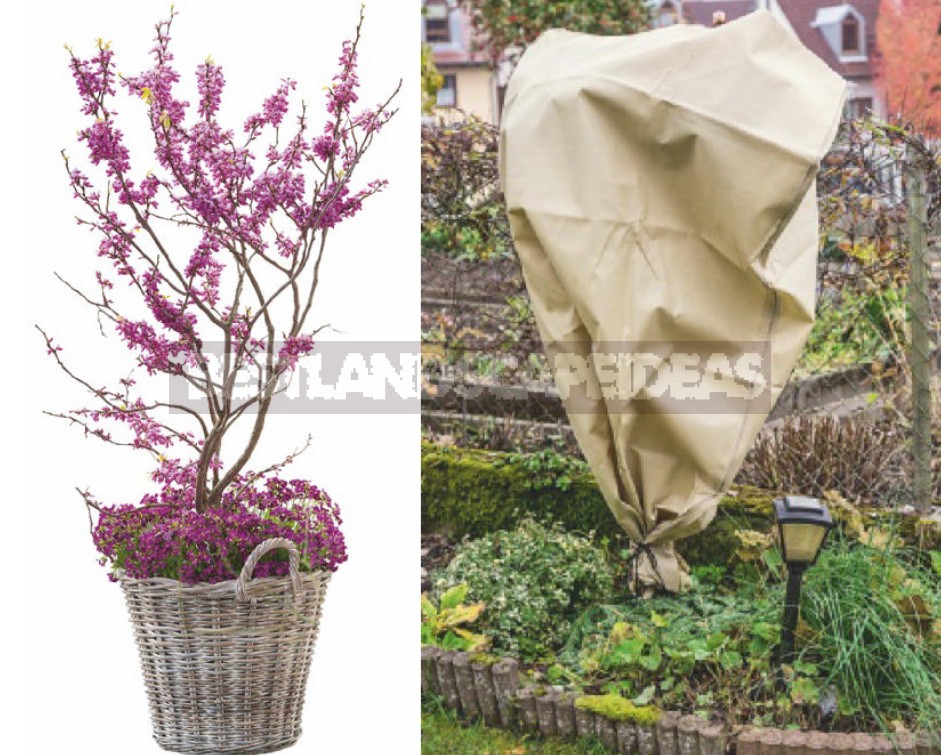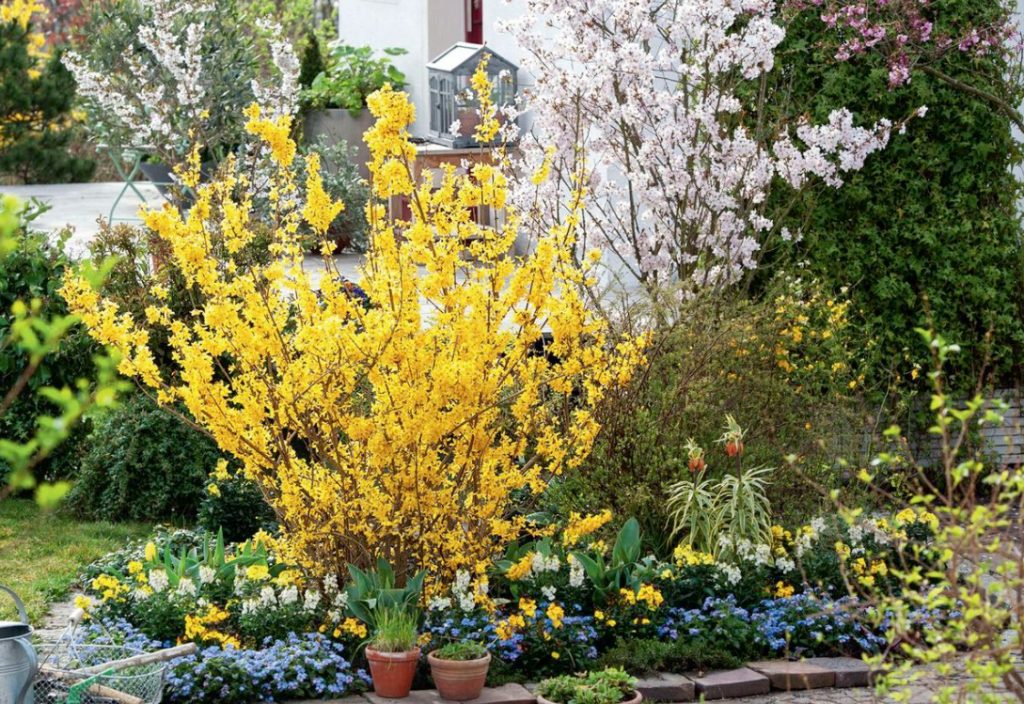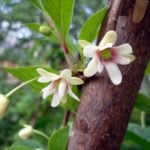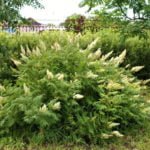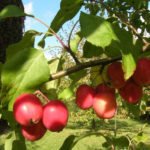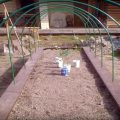The long-awaited spring has finally come! And this means that a magical time is just around the corner, when the garden will burst into a firework of colors. And not least-thanks to the spring-flowering ornamental shrubs and trees. On the site, they not only play an important structuring role, but also serve as catchy accents, showing flowers of various colors. Yellow, white or pink buds-spring-flowering plants after the gray winter days seem like fantastic heroes from a fairy tale. Already in March – April, forsythias are everywhere decorated in yellow in the gardens, primarily in the southern ones, charging the space around with a cheerful mood.
In the main photo: the spring-flowering shrub forsythia enjoys the well-deserved love of gardeners. It just looks magical in the middle of the sea of forget-me-nots and Erysimum cheiri. The airiness and elegance of the composition are added by cherry blossoms in the background.
Important: the shrub can be grown both in the garden and in a pot (especially dwarf varieties ‘Week End’ or ‘Minigold’) and supplemented with equally early flowering low-growing partners.
Giant primroses: what to choose for your garden?
Warmed by the first rays of the sun, many trees and shrubs will soon appear in a delightful floral decoration. In the right place, whether it is a flower garden or a pot, and in the appropriate company, they will become one of the main characters of the spring celebration of nature. Delicate accents in the garden will help to place sakura, cherry plum, Amelanchier, Prunus nana and decorative apple tree, the flowers of which, depending on the variety, have white, pink or red color.
Amelanchier laevis is a true find for any garden. The plant is 3-4 m high in May, numerous white flowers are scattered.
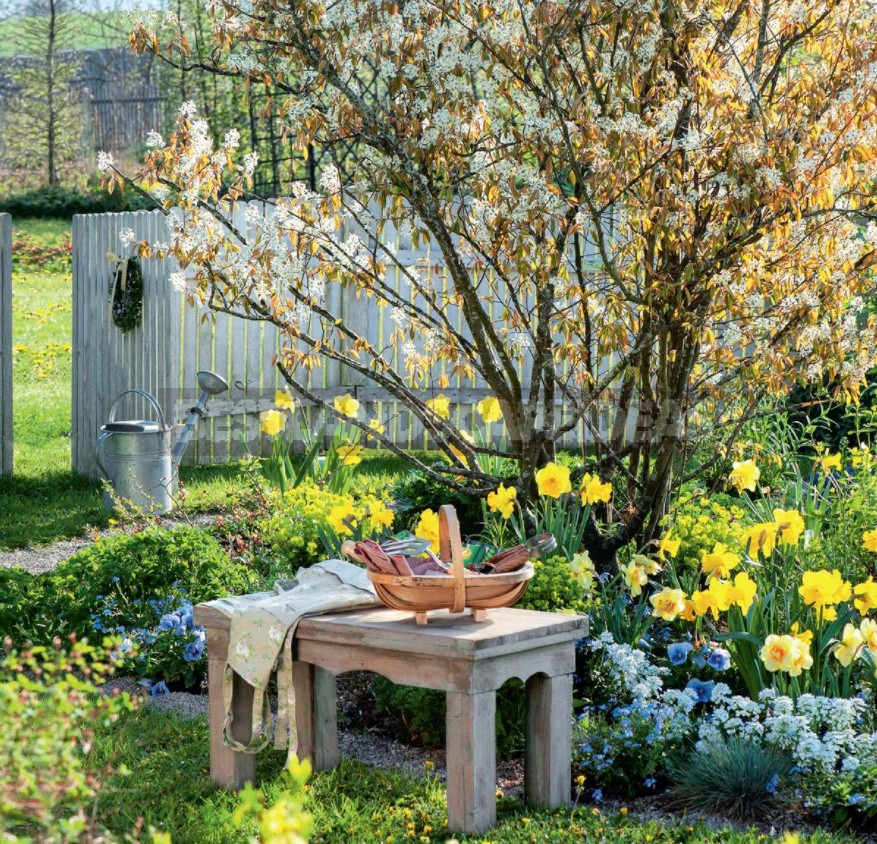
Tip: Amelanchier laevis looks especially impressive in the company of yellow daffodils and white Iberis.
Dwarf and cold-resistant (withstands up to -20°C) Prunus incisa ‘Kojou-no-mai’ has proven itself as an ideal candidate for planting in a tiny flower garden or in a large pot. In spring, its shoots are strewn with numerous pink-white flowers, in autumn the leaves are painted in an intense red color. In the photo below, ‘Kojou-no-mai’, white crocuses and primroses with pastel-colored flowers gathered in a” clearing ” in a low container made of Korten steel. A charming decor for a place of rest!
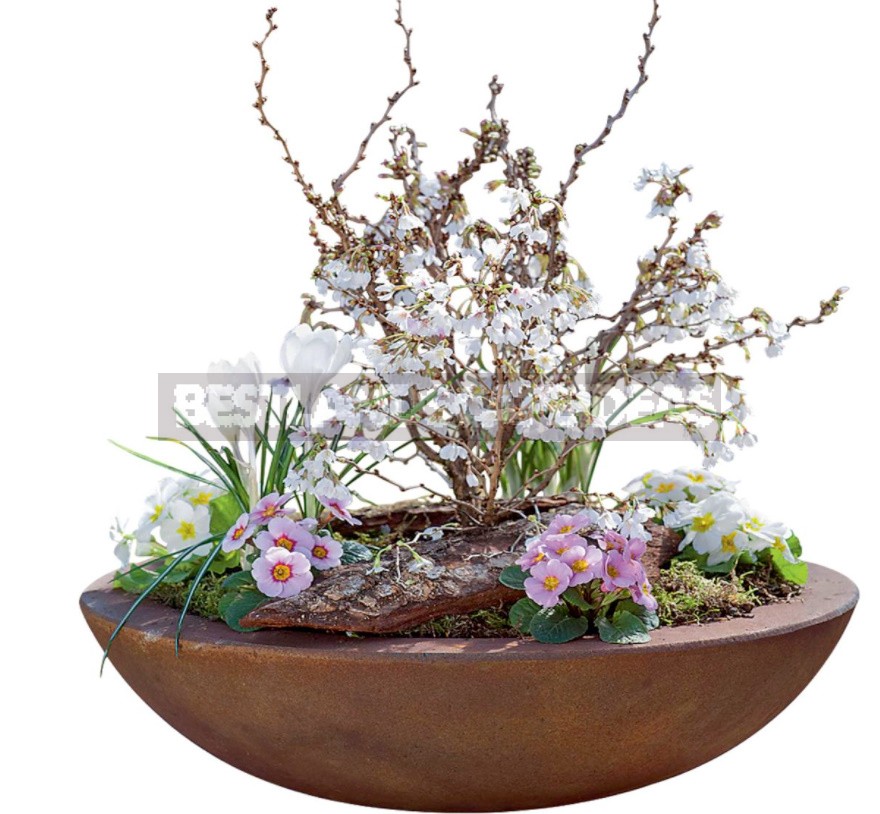
Magnolias – Magnolia stellata and Magnolia kobus deserve no less attention. Both species grow relatively well in the middle zone (the latter is still more cold-resistant).
In the photo on the left: Magnolia stellata pleases the eye with numerous white fragrant flowers in spring. Both the sun and partial shade are suitable for her. On the right: Kerria japonica ‘Golden Guinea’ with a height of about 1.5 m gracefully hovers over a modern gray concrete pot located on the terrace. Purple Erysimum cheiri ‘Poem Lilac’ and Viola tricolor effectively contrast with the plant.
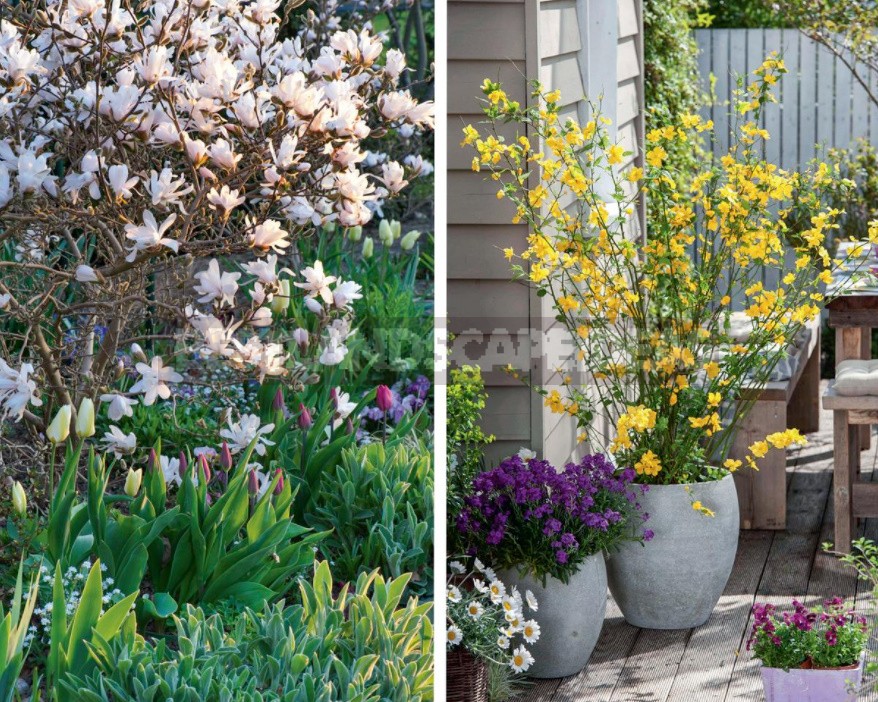
Tip: it is better to give magnolias the opportunity to “perform” solo, so that competitors do not attract attention to themselves.
They grow and bloom without problems in the northern regions of Syringa, Cornus and Philadelphia. They are not afraid of late frosts.
Syringa meyeri ‘Palibin’ is especially charming in the form of a stem tree. Light purple flower brushes of the plant in May fill the air with a pleasant aroma. Aquilegia caerulea, Alchemilla, as well as the charming white Phlox divaricata harmoniously coexist in the trunk circle. By the way, this lilac tolerates urban conditions well.
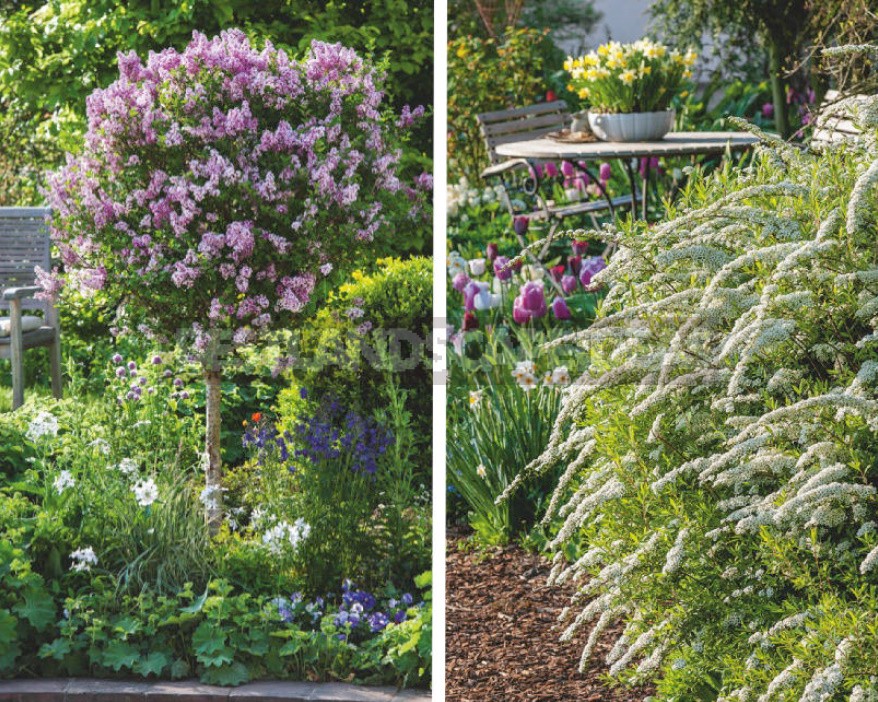
Spiraea arguta is a universal decorator. In front or behind the house, solo or in the form of a hedge – a dense bush 1.5 m high with picturesquely drooping shoots is magnificent in bloom. Spirea grows on almost any soil, painlessly tolerates drought and severe pruning.
Prunus cerasifera ‘Hollywood’ in the form of a small tree or a compact shrub fits into any style of garden decoration. Since the white flowers appear before the brown-red leaves, the spectacular plant catches the eye from afar — both in a pot and in a flower garden.
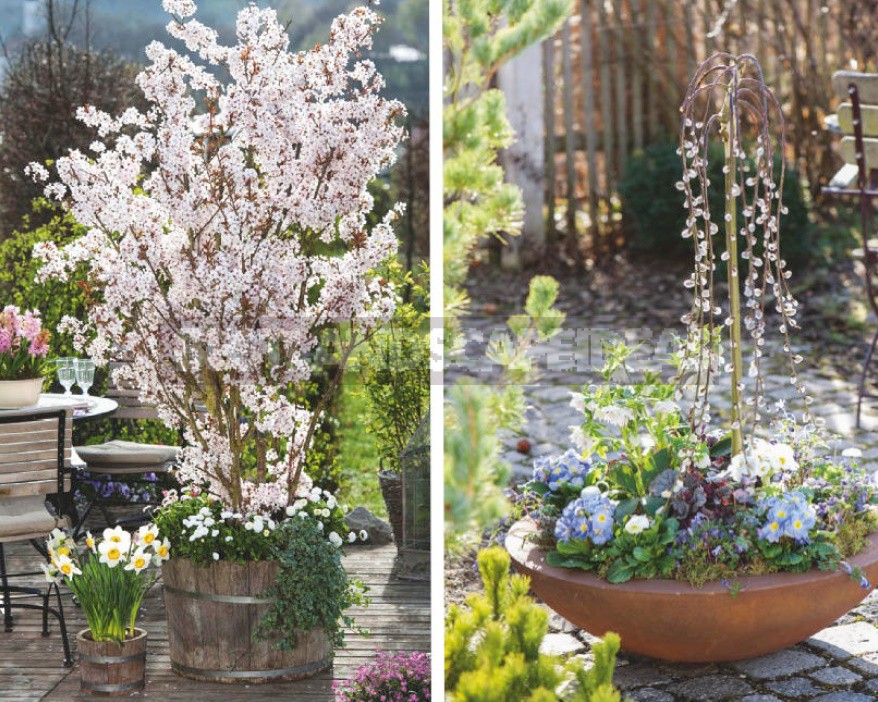
Salix caprea ‘Kilmarnock’ in a container covered with fashionable rust today, captivates with the charm of naturalness. White Helleborus, blue primroses and red-leaved geyhers are well combined with the” weeping ” tree. Depending on the scion, the willow reaches a height of 1.2 m.
Where and with what to plant spring-flowering trees and shrubs
For more spectacular spring-flowering giants, it is desirable to plant them in flower beds one by one, otherwise the majestic beauties can simply get lost in the “motley crowd”. In one planting, only trees and shrubs are well combined. In this case, we cannot but rejoice at the fact that nurseries offer a choice of this or that woody plant at the same time in the form of a shrub and in the form of a stem tree. And this gives much more opportunities to integrate them into the design of the garden and combine several types at once on one living space.
Bulbous plants, such as muscari, crocuses, tulips and daffodils, will be a worthy escort for giants in the first place.
In the photo on the left: the terrace and the area in front of the entrance door is an ideal stage for spring compositions, for example, from Ribes sanguineum ‘Red Bross’ accompanied by pink buttercups, tiarella ‘Pink Torch’ and Arabis ‘Alabaster’. When the “suite” blooms, it can be replaced with annuals. On the right: ‘February Pink’ is a relatively hardy variety of Prunus incisa. In May, its branches are covered with simple pale pink flowers. The stem form with a graft of this variety is ideal for planting in a flower garden near the terrace or in the front garden. In the photo, the attractiveness of the tree is emphasized by yellow tulips, blue Viola tricolor, light yellow primroses and white lobularia.
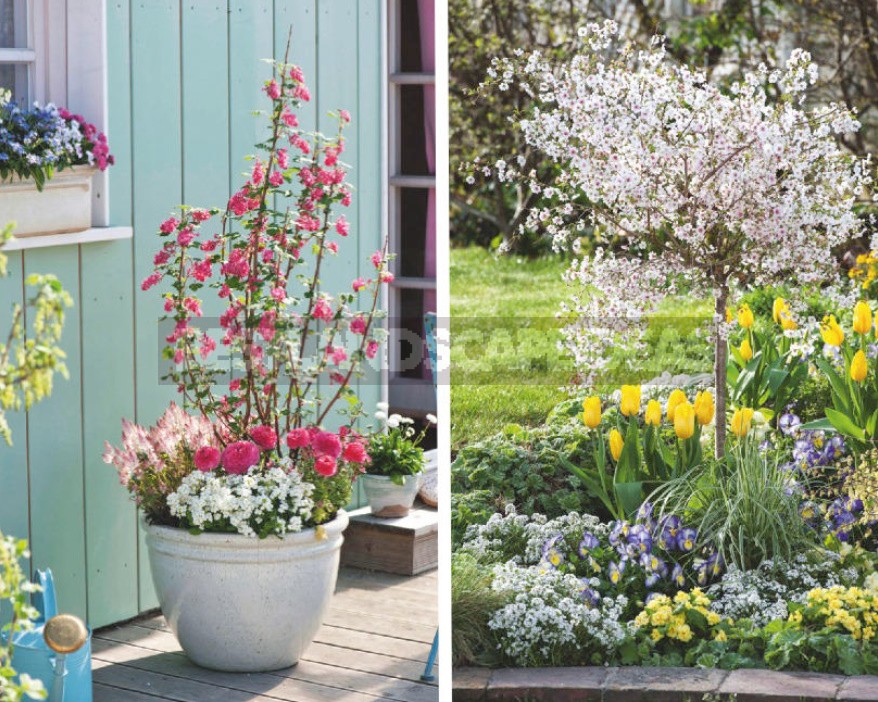
Important: it is desirable to plant partners near shrubs and trees at the end of summer. At this time, giants do not draw much water from the soil, and herbaceous perennials can safely take root until winter.
Shrubs, as well as dwarf trees will come to the yard on the terrace or at the entrance to the house, especially if they are supplemented with suitable companions in decorative pots. When the miniature primroses, buttercups will fade, they can be replaced with annuals. Also, in one pot, shrubs are harmoniously combined with decorative herbs and ivy.
Important: for normal growth, giants should immediately be provided with a pot that is no smaller in diameter than the crown of the plant, and then regularly transplanted into a larger container. And in a couple of years, when the “pet” matures, it will be possible to plant it in the open ground.
What should I do if there is a threat of late frosts?
Most decorative woody plants are naturally hardy and persistently tolerate all the vagaries of nature. There are also adapted to sub-zero temperatures, for example, Hamamelis, whose long narrow flower petals are twisted to the middle and thereby protect the ovary. Late frosts are dangerous only for sensitive species, for example, for magnolia or Cercis — they bloom quite early in spring. Such plants, they grow in a flower garden or a pot, on the eve of return frosts, it does not hurt to cover them with non — woven fabric, burlap or any other fabric-to protect them from frost and icy wind.
In the photo on the left: Cercis siliquastrum is a stunningly beautiful plant, whose flowers appear on perennial branches. It looks even more spectacular in tandem with Arabis ‘Roselite’ in a wicker planter. On the right: non-woven fabric or burlap allows air to pass through and at the same time protects from the cold.
